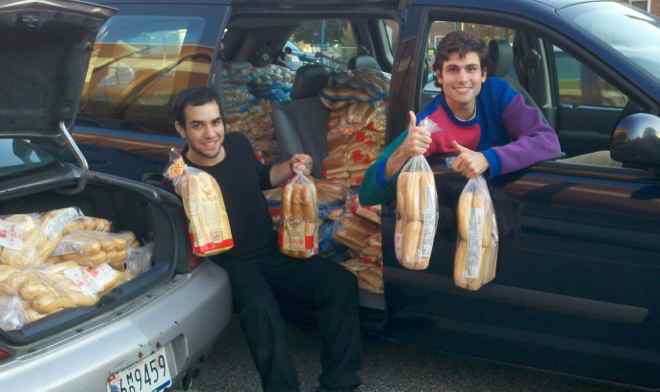America does not have a food shortage problem; it has a food waste problem. At the same time as 50 million Americans live at risk of hunger, food continues to be America’s largest waste stream, with 40% of food grown going to waste. According to the EPA, America’s food waste amounted to 36 million tons in 2011. Food waste costs Americans US$165 billion every year and accounts for 25 percent our country’s freshwater use.
These numbers are absolutely enormous, so let me help to visualize what they mean. According to food waste expert Jonathan Bloom, America wastes enough food every single day to fill the 90,000 Rose Bowl football stadium! Worst of all, when food rots in landfills it emits methane, a greenhouse gas the EPA says has 21 times the effect of carbon dioxide.
As a student at the University of Maryland, College Park, I encountered this issue first hand a couple years ago when some friends and I realized that all the unsold leftover food from our dining hall was about to get chucked in the trash can. Completely in awe and very aware that there were hungry people just blocks away, we were inspired to create Food Recovery Network (FRN) in September 2011 to donate this surplus diner food to local shelters and soup kitchens.
The seemingly massive scale of our donations was exhilarating – we were recovering 100 pounds or more every night. It felt so amazing right off the bat to be feeding local hungry people rather than UMD’s trashcans. Then, we noticed that most other colleges across the country were also throwing away all their surplus food, so we took our movement national. Exactly two years later, we’re now at 23 colleges and have donated over 130,000 meals to hungry Americans, diverting 166,000 pounds of delicious food from the waste stream.
Food Recovery Network is exploding across the country. Thanks to Sodexo Foundation and others we have hired paid staff, and over 450 students have applied to bring FRN to their college. Our goal: to donate 10 million pounds of food in the next five years. To us, 10 million pounds is a lot. But honestly, it barely scratches the surface of one of America’s deepest, darkest secrets. With food waste, the scope is in billions – not millions – of pounds.
The craziest part is that the decision to donate surplus food isn’t actually altruistic, but rather very much in a business’s self-interest. There is a very significant enhanced tax deduction, good publicity, and an easy opportunity to boost employee morale. So why is there a national norm for college dining halls, restaurants, caterers, hotels, farms, and distribution warehouses to not participate in food recovery? The simple answer is that they’re afraid if something goes wrong with the food, they’ll get sued. However, this is completely unfounded. A little-known federal law called the Bill Emerson Good Samaritan Food Donation Act protects all good faith food donors from liability. Moreover, according to a new report from the University of Arkansas Food Recovery Project, there has never been a single lawsuit regarding liability of donated food!
Food recovery is a common sense solution, and I envision the American food industry waking up to it over the next five years. Much of the work that needs to be done is simply educating all of the restaurant, catering, and hotel managers of America about the Bill Emerson Act and providing an easy program for them to donate through. While FRN is only on college campuses, the Food Donation Connection provides a great system for other venues to donate. The food is out there; we just need to get it to the people that need it.
According to the NRDC, if America wasted just 15 percent less food we could feed 25 million Americans. For the sake of the kid who is going back to school this month and is having trouble focusing in class because he’s hungry, please share this post with a friend – especially a friend in food service who has the power to help by joining a food recovery program.















